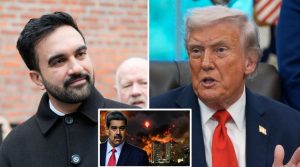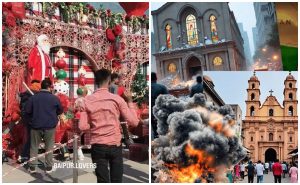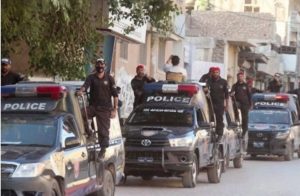KATHMANDU (Web Desk) – Rescue work has resumed finding victims and survivors of the latest deadly earthquake to hit Nepal.
At least 65 people died in Nepal and nearly 2,000 were hurt in Tuesday’s 7.3 magnitude quake, with fears the figures could rise. At least 17 died in India.
A search continues for a missing US aid helicopter with eight people on board.
Thousands of Nepalis spent the night in the open. Many have not returned to their homes since a 7.8 magnitude quake on 25 April that killed over 8,000.
Tuesday’s earthquake was centred about 76km (47 miles) east of the capital, Kathmandu, near the town of Namche Bazaar.
A second tremor of 6.3-magnitude hit Nepal 30 minutes later and numerous other aftershocks continued into Wednesday morning.
DEATHS IN INDIA
The main quake was felt in northern India, Tibet and Bangladesh. India’s home ministry said 16 people had been killed in the state of Bihar, and one more in Uttar Pradesh. Officials in China said one person was confirmed dead in Tibet.
Nepal’s districts of Dolakha and Sindhupalchowk, east of the capital, were initially listed as the worst hit, with officials confirming 26 fatalities, 20 of them in the town of Charikot.
But the true extent of the casualties and damage remains unclear.
Home Minister Bam Dev Gautam said: “Many houses have collapsed in Dolakha… there is a chance that the number of dead from the district will go up.”
Regine Kopplow, a German aid worker in Charikot said: “I saw a woman in the building opposite jump from the third floor who suffered injuries to her leg, elbow and hand.
“People stayed outside, the shaking continued. Some people were crying, hugging each other.”
The US military said a Marine Corps Huey helicopter involved in disaster relief efforts had gone missing while working in the vicinity of Charikot.
The Pentagon said there were six US Marines and two Nepali soldiers on board. It said there was as yet no sign of a crash and the craft may have landed safely, amid reports of fuel issues.
A Nepalese army helicopter is searching for the missing aircraft.
The Red Cross said it had received reports of many casualties in the town of Chautara in Sindhupalchowk, where it has a hospital and which has become a hub for humanitarian aid.
Spokeswoman Nichola Jones said: “Hundreds of people are pouring in. They are treating dozens for injuries and they have performed more than a dozen surgeries.”
At least two major buildings collapsed in Kathmandu, with at least three people rescued.
But there have been other reports of landslides and fallen buildings in towns and villages outside the capital.
Save the Children said Gorkha, close to the epicentre of the 25 April quake, had been hit by new landslides. A spokeswoman told the BBC its staff had been “dodging huge rocks rolling off the hillside”.
Residents of Namche Bazaar said there was some damage there but no reports of deaths.
The BBC’s Navin Singh Khadka says local officials in the Everest region report very few tourists are still in the area following the 25 April quake.
Many residents of the capital and other towns spent Tuesday night outdoors, too scared to return to homes.
Dipak Koirala, who lives in Ramechhap district, told AFP news agency: “I was thinking of moving to a rented room, but today was so scary I can’t risk my family’s life.”
Sulav Singh, who lives in Kathmandu, told the Associated Press: “I thought I was going to die this time. Things were just getting back to normal, and we get this one.”
PARLIAMENT ALSO SHAKEN
Politicians on Tuesday fled Nepal’s parliament chamber in Kathmandu as the quake hit.
Prime Minister Sushil Koirala said later: “At an hour of a natural disaster like this, we have to face it with courage and patience.”
The BBC’s Yogita Limaye, who was in Nepal’s mountains when the latest earthquake struck, said: “The earth shook and it shook for a pretty long time.
“I can completely understand the sense of panic. We have been seeing tremors – it’s been two-and-a-half weeks since the first quake. But this one really felt like it went on for a really long time. People have been terrified.”
The epicentre this time is about 80km (50 miles) east-north-east of Kathmandu, halfway to Everest. On 25 April, the big quake began 80km to the north-west of the capital.
In April, we saw the fault boundary rupture eastwards for 150km (93 miles). And the immediate assessment suggests Tuesday’s tremor has occurred right at the eastern edge of this failure.
In that context, this second earthquake was almost certainly triggered by the stress changes caused by the first one.
The US Geological Survey’s modelling suggested there was 1-in-200 chance of a M7-7.8 event occurring this week.
Quake experts often talk about “seismic gaps”, which refer to segments of faults that are, to some extent, overdue a quake. Tuesday’s big tremor may well have filled a hole between what we saw on 25 April and some historic events – such as those in 1934, that occurred further still to the east.




















